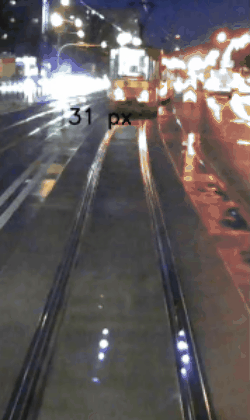Igor Morawski

I'm currently enrolled in a Ph.D. program with a focus in Image Processing, Computer Vision and Deep Learning. Well acquainted with traditional and SOTA Computer Vision and Image Processing algorithms.
I'm an engineer with educational background in Computer Science and Information Engineering, Electrical Engineering, Aerospace Engineering and Chinese Studies.
Research interests: neural image signal processor (ISP) pipeline for cameras, object detection under adverse conditions, low-light image processing, enhancement and restoration, event-based cameras, extremely low-resolution thermal cameras, sensors, image and video quality assessment.
Experience
Action Recognition and Prediction using Thermopile Sensor Array




The topic of my previous research revolved around understanding extremely low-resolution video captured by thermopile sensor array in monitoring systems. Thermopile sensor array is a far infrared sensor that can capture temperature distribution
in form of extremely low-resolution image (8×8 px, 16×16 px, etc). Altogether, it is virtually impossible to identify a person in the image caputered by the sensor. Because of that the sensor does not raise privacy concerns
like high-resolution cameras and does not require the subjects to use wearables on constant basis. However, the information contained in data is extremly limited and, because of the mechanism of sensing, very noisy.
I have proposed a new method for thermopile sensor array action recognition that outperformed related works. To this end, I have sucsessfuly developed two-stream architecture for deep learning: CNN + stacked GRUs with
spatial and temporal branches and tested the method on the FIR dataset proposed by Nagoya University. The dataset includes actions: walking, sitting down, standing up, falling down, sitting, lying and standing.
Morover, I extended this method to action prediction using multi-view thermopile sensor array system, and collected and annotated a related dataset of bed exits in elderly population.
Tram Anti-collision System Project
During my study at the Avionics Institute in the Military University of Technology in Warsaw, I have developed strong technical and science skills in the fields related to Aerospace Engineering, especially mathematics, physics, electronics, control theory,
embedded systems, microcontrollers, metrology and sensors.
I also had a chance to work as a team member of the industry collaborative project realized by the Avionics Institute. The goal of this industry collaborative project was to design a tram anti-collision system to be
employed in one of the major Polish cities. My main task involved researching the possibility of employing Computer Vision to develop such a system. In particular, I was responsible for proposing a method to measure the distance
to the obstacle on the tracks based on a single camera (other than using markers).
Obstacle was defined as any object crossing the rails constituting a collision threat to the tram. Because in World Coordinate System distance between the rails is constant, the distance to the object can be calculated
based on this property. The preliminary method I proposed was to calculate HOG in order to detect rails. Next, the flood fill algorithm was used to determine the position of an obstacle along the rails, allowing for the calculation
of the distance between the rails at this point, and obtaining information about the distance between the tram and the obstacle. I implemented this method in C++ using OpenCV and prototyped on Odroid U3 in combination with
a Basler industrial camera. The results of this preliminary method were satisfactory and considered for further development. The biggest advantage of this method over other methods such as using markers was that it allowed
detecting any sort of object on the collision course irrespectively to its category.
This project was a chance for me to realize my interest in research and concentrate on computer vision in my future career.
Education
National Taiwan University
GPA: 4.27/4.30
National Chung Cheng University
GPA: 4.29/4.30
University of Warsaw
2 out of 4 semesters,
terminated due to receiving MOE Taiwan Scholarship
Grade Average: 91%
Military University of Technology in Warsaw
Grade Average: 90%



